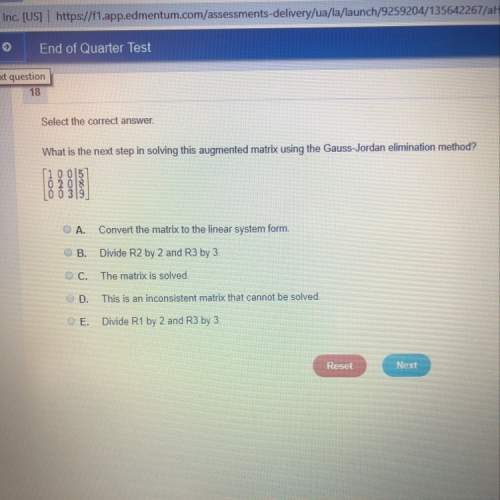
Mathematics, 11.03.2020 04:26 taytay210
Let A be an event, and let IA be the associated indicator random variable ( IA is 1 if A occurs, and zero if A does not occur). Similarly, let IT be the indicator of another event, B . Suppose that P(A)=p , P(B)=q , and P(A∩B)=r . Find the variance of IA−IB , in terms of p , q , r . Var(IA−IB)=

Answers: 3


Another question on Mathematics


Mathematics, 21.06.2019 17:30
Terri makes a quilt using three sizes of fabric squares the side lenght of each fabric square is the square root of the area
Answers: 2

Mathematics, 21.06.2019 18:30
Which equation represents the model shown? a)1/3 divide 1/6 = 2 b)2/3 divide 1/6 = 2/18 c)1/3 divide 1/6 = 1/18 d)2/3 divide 1/6 =4
Answers: 1

Mathematics, 21.06.2019 22:30
Which statement shows that 6.24 is a rational number? a. 6.24 = 6.242424 b. 6.24 = 6.24 c. 6.24 = 68⁄33 d. 6.24 = 66⁄25
Answers: 1
You know the right answer?
Let A be an event, and let IA be the associated indicator random variable ( IA is 1 if A occurs, and...
Questions



Biology, 09.01.2021 05:00

Arts, 09.01.2021 05:00

History, 09.01.2021 05:00


Mathematics, 09.01.2021 05:00

Mathematics, 09.01.2021 05:00



Arts, 09.01.2021 05:00

Mathematics, 09.01.2021 05:00

Mathematics, 09.01.2021 05:00

English, 09.01.2021 05:00

Arts, 09.01.2021 05:00

Mathematics, 09.01.2021 05:00

Mathematics, 09.01.2021 05:00



![var(IA) = E(IA)^2 - [E(IA)]^2\\=I^2\dot P(A) + 0^2(I-P(A))-[1P(A)+0(I-P(A))]^2\\=P(A)+0-[P(A)+0]^2\\=P(A)-[P(A)]^2\\=P(A)[1-P(A)]](/tpl/images/0542/4317/0a351.png)

![P[1-P]\\\therefore\, var(IA)=P[1-P]...(1)](/tpl/images/0542/4317/cc120.png)

![cov(IA,\, IB)=E(IA\dot IB)-E(IA)E(IB)\\=1\times P(AnB)+[0times P(AnB)^c]-P\times q](/tpl/images/0542/4317/c9dbb.png)






